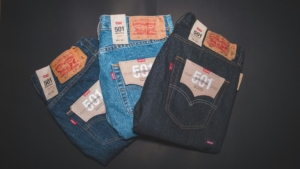Whiskey Is for Drinking, Water is for Fighting over.
Quote from Mark Twain
- In most parts of the world, water is a scarce resource. That might seem strange, because there is so much water on Earth.
- Almost all of the water on Earth, more than 97 percent of it, is seawater in the oceans. The rest is called fresh water, because it does not have a high salt content.
- Most of the world’s fresh water is frozen solid in large glaciers in Antarctica and Greenland. Almost all of the fresh water that is available for human use is either contained in soil and rock below the surface, called groundwater, or in rivers and lakes.
- Water is what makes our planet so unique and virtually everything on our planet relies on it.
- Having clean water is vital to our individual health, our collective agricultural needs, and the needs of our environment. It is the foundation of all life and important to sanitation, human rights, urbanization, sustainability, economic growth, etc.

The Levi Strauss & Co. (LS&Co.) conducted the apparel industry’s lifecycle assessment (LCA) to assess the entire lifecycle impact of a core set of products.
The study focused primarily on the company’s U.S. operations and uncovered that the greatest water and energy impact was in two areas: cotton cultivation and consumer care.
This is a link to the Apparel Industry’s Lifecycle Assessment (LCA) report.
Here is one example of their findings:
The total amount of water used to produce a $55 pair of Levi’s 501 Jeans is 769 gallons!
- Growing the Cottian as the raw material requires 678 gallons of water.
- Manufacturing (creating the fabric, cutting, sewing and finishing) requires 71 gallons of water.
- Packaging and Sundries require 20 gallons of water.
The cost translates to $0.072per gallon.
Unfortunately, this is a totally unrealistic price for water and there are many such examples.
We hold the belief that alongside recycling and conservation, a shift in reality (such as this Levi example) will compel us to alter our mindset. This change will necessitate adjusting our expectations to more realistic pricing, enabling new water resources and projects to meet our water needs and cater to the continuously increasing demand.
Does it really make sense to spend more on a cell phone bill than on a water bill? Only time will tell.
- Water is everywhere, but not where it’s needed.
- This could be resolved if conveyance-systems are put in place to transport water from where it is to where it is needed.
- Meanwhile while we lack reliable outlets for Produced Water, state water shortages threaten Texas towns and their residents.
- Border towns under threat of future water shortages include Del Rio, Eagle Pass, Laredo, McAllen, Harlingen, Brownsville, Corpus Christi, etc.
- This could be resolved by “cleaning” Produced Water using various technologies such as desalination, bringing it to municipal standards and delivering it to many municipalities and industrial users.
